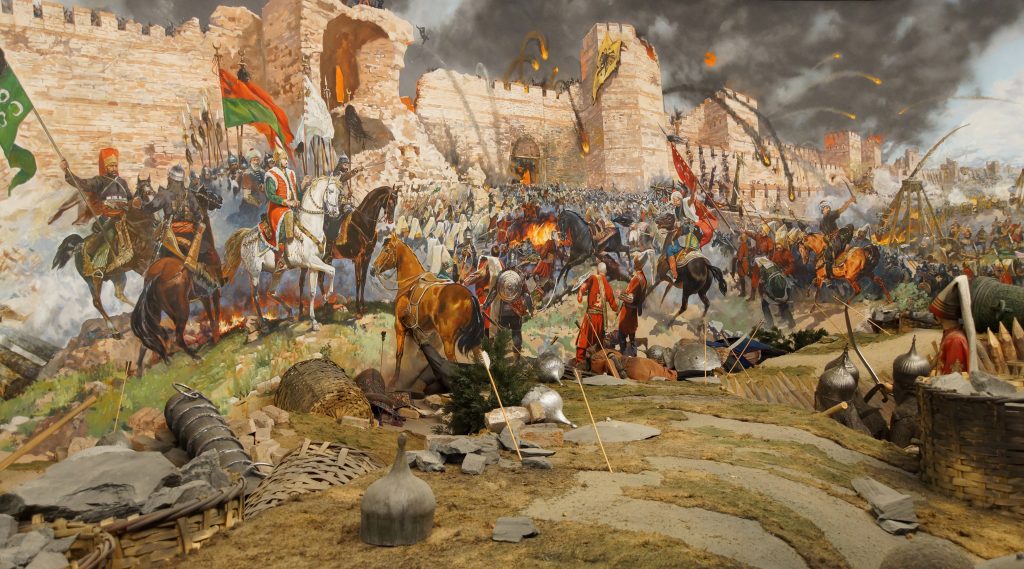The fall of Constantinople in 1453 was a major turning point in world history, marking the end of the Byzantine Empire and the beginning of the Ottoman Empire’s ascendancy. Constantinople, which had been the capital of the Byzantine Empire for over a thousand years, was one of the most heavily fortified cities in the world, with walls that had withstood multiple sieges.
The infamous exception was the Fourth Crusade. Launched by Pope Innocent III in 1202, it aim to recapture the Holy Land from Muslim control. Instead, the Crusaders ended up sacking the Christian city of Constantinople in 1204. The diversion from their original goal was caused by a complicated web of politics and power struggles within the Byzantine Empire. The Crusaders, led by Venetian merchants, were promised financial and military aid by Alexios IV Angelos, a claimant to the Byzantine throne. When he failed to deliver on his promises, they attacked Constantinople and established a new Latin Empire. This led to a deep schism between the Eastern and Western branches of Christianity, which would last for centuries and it weakened the Byzantine’s ability to defend against later sieges.

The Siege of Constantinople in 1453 was the final and decisive battle in the centuries-long struggle between the Byzantine Empire and the Ottoman Empire. Constantinople was the capital of the Byzantine Empire and a vital commercial and cultural center. After a 53-day siege, the Ottomans, led by Sultan Mehmed II, breached the city’s walls, overwhelming the defenders and capturing the city.
The Ottoman army consisted of over 100,000 soldiers, while the Byzantine forces had only 7,000 men, including a small contingent of foreign mercenaries. The city’s walls, which had withstood multiple attacks over the centuries, were breached by the Ottoman’s innovative use of large cannons. The city relied on an enormous chain that blocked entry into the harbor called the Golden Horn. In a major strategic move Mehmet constructed a road and moved his ships overland to launch past the chains and provide a final blow to the Byzantine defenses.
The fall of Constantinople had far-reaching consequences, both for the Byzantine Empire and for the wider world. For the Byzantines, it was the end of an era, and the fall of their great city marked the end of their empire. It also marked the end of the Eastern Roman Empire, which had survived for over a thousand years after the fall of Rome. The Ottomans, on the other hand, gained control of one of the most important cities in the world, and they used it as a base to expand their empire into Europe.
The fall of Constantinople had significant implications for the wider world as well. It led to a massive exodus of Byzantine scholars and artists, who fled to Italy and other parts of Europe, taking with them their knowledge of classical literature, philosophy, and science. This, in turn, helped to fuel the Renaissance, which was a period of great cultural and intellectual growth in Europe.
The fall of Constantinople also marked the beginning of a long period of conflict between the Ottoman Empire and the European powers. The Ottomans continued to expand their empire, eventually coming into conflict with the Habsburg Empire, which led to a series of wars that lasted for centuries. The Ottoman Empire also became a major player in the geopolitics of the Middle East, eventually leading to the collapse of the Ottoman Empire after World War I.
Overall, the fall of Constantinople in 1453 was a momentous event that had far-reaching consequences for the world as we know it today. It marked the end of one era and the beginning of another, and it shaped the course of history for centuries to come.

